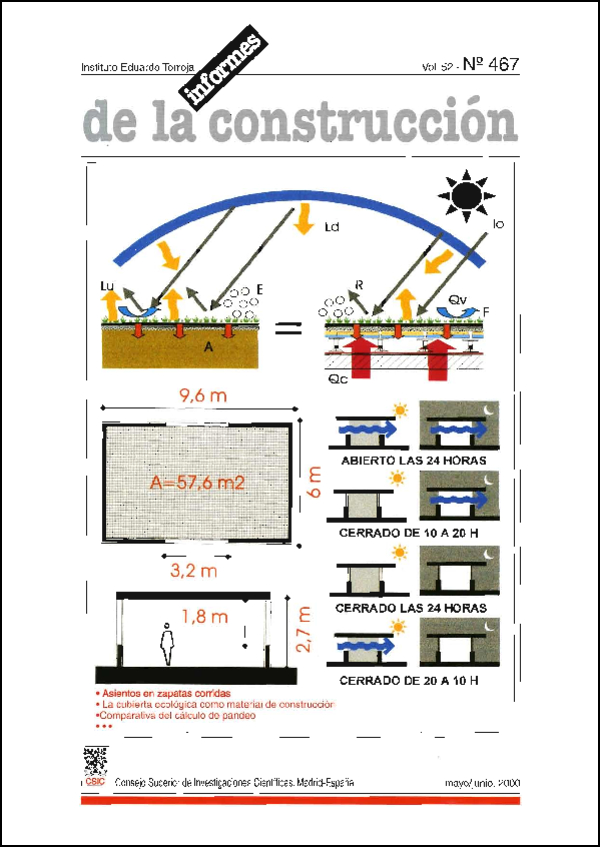The ecological roof as material of construction
DOI:
https://doi.org/10.3989/ic.2000.v52.i467.705Keywords:
Ecological roof, thermal conductivity, thermal simulation, stability thermal coefficient, thermal comfortAbstract
The ecological roof is one with a cover of vegetation with a thin substratum and a layer of low level plants. This type of roof has many advantages including architectural, construction, environmental and aesthetic ad vantages. In order to determine the thermal behaviour of models with ecological roofs, simulations were performed on these and other types of construction in the two areas involved in the study: Maracaibo and Madrid. Five different roofs were created for the study, analysed in four ways: 1) with the building windows closed throughout the whole 24 hours, 2) with the windows closed during the day and open at night; 3) open 24 hours; 4) open during the day and closed at night. The simulation tool used in the study was the "Method of Interior Temperature Evolution Calculation" developed by Javier Neila. The results obtained show that the ecological roof reduces the heat transference in hot seasons, acting as exterior insulation, and preventing heat loss by radiation into space in winter.
Downloads
Downloads
Published
How to Cite
Issue
Section
License
Copyright (c) 2000 Consejo Superior de Investigaciones Científicas (CSIC)

This work is licensed under a Creative Commons Attribution 4.0 International License.
© CSIC. Manuscripts published in both the print and online versions of this journal are the property of the Consejo Superior de Investigaciones Científicas, and quoting this source is a requirement for any partial or full reproduction.
All contents of this electronic edition, except where otherwise noted, are distributed under a Creative Commons Attribution 4.0 International (CC BY 4.0) licence. You may read the basic information and the legal text of the licence. The indication of the CC BY 4.0 licence must be expressly stated in this way when necessary.
Self-archiving in repositories, personal webpages or similar, of any version other than the final version of the work produced by the publisher, is not allowed.















